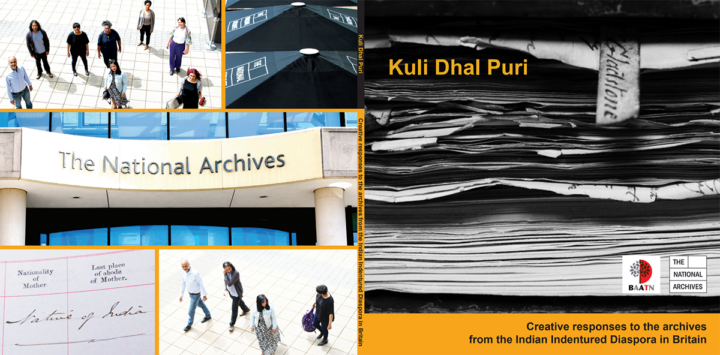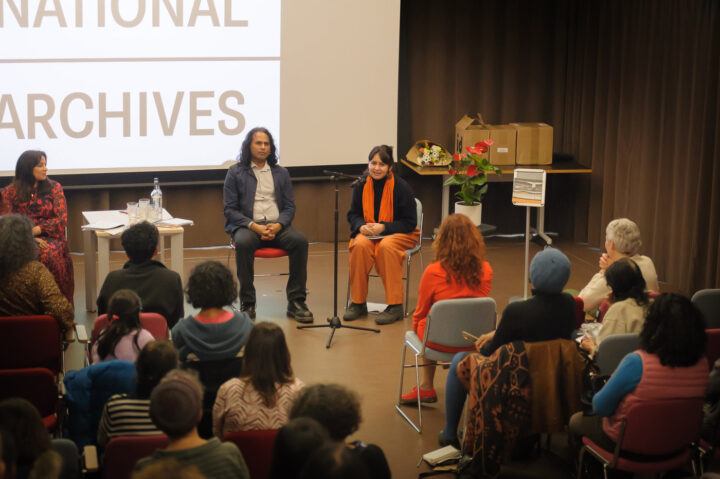
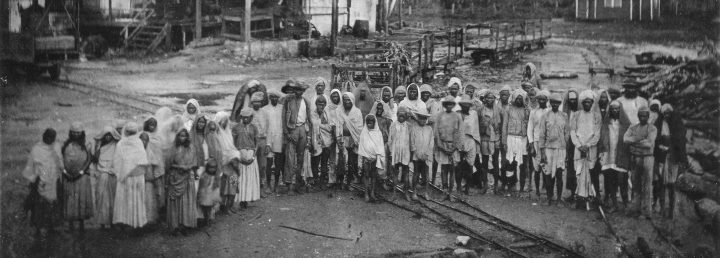
Photograph of indentured Indian labourers at Spring Garden Buildings. Jamaica, 1880. Catalogue reference: CO 137/497/29 folio 519
The National Archives Outreach team has developed new projects on Indian indenture researching our collections and writings on indenture to support collaborative projects with Nutkhut and BAATN. We intend to further develop our Outreach offer on this very important topic.
Indian Indenture: Creative Responses to the Archive (2023)
The Kuli Dhal Puri creative anthology is the culmination of our successful collaboration with BAATN that began in 2019. This wonderful collection of writings and images, which are deeply soulful, are the processing of emotional responses to archival materials relating to the history of Indian Indenture in our collection. Please download a copy of the anthology here.
Please note that the term ‘coolie’ or ‘kuli’ was used in the past to describe Indian indentured labour and has pejorative connotations. In more recent times there has been a movement to re-appropriate the term and use it more positively.
Talk
In 2020, as part of the Girmit project led by Nutkhut, we created a training video to introduce project volunteers and the wider public to our archives and to a better understanding of the history of Indian Indenture.
Blog posts
Indian indenture: Creative responses to the archives
I am the vessel.
Through which an explosion
of salivation may absolve me
from blandness
The vessel that paints
my fingers yellow
and coaxes cumin into nostrils
The vessel that carries flavour,
history, and tradition from my
ancestors to me
Split Pea Symphony, Gina Agnew
On 25 March 2023, The National Archives completed the launch of the Kuli Dhal Puri anthology, a project pioneered by the archives in collaboration with the Black African Asian Therapy Network (BAATN), to introduce a group to our records on Indian Indenture. In the extract above from her piece, Split Pea Symphony, the creative writing facilitator and group member, Gina Agnew, captures what others had felt: that they were the vessels through which their ancestors’ stories were held.
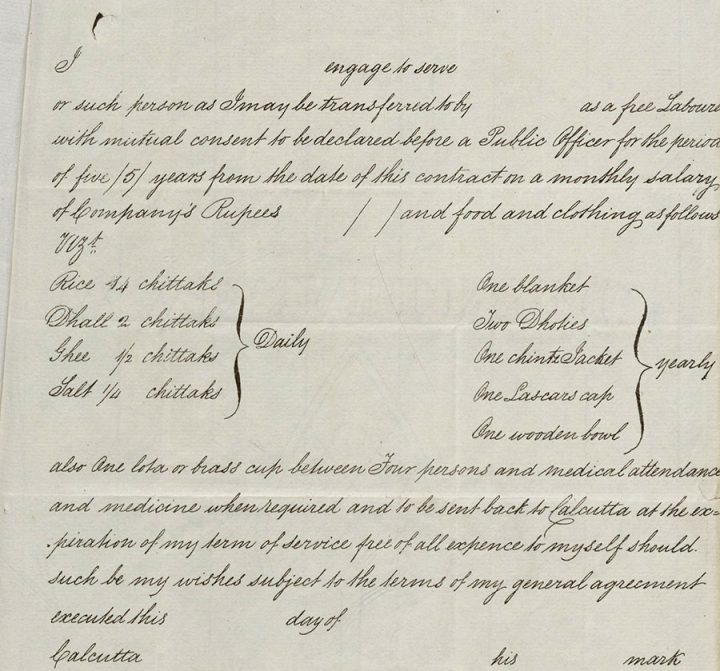
Extract of a page in an indentured labourer contract. Catalogue ref: CO 111/161
A ‘new system of slavery’? The British West Indies and the origins of Indian indenture
In March 1837, John Gladstone, a sugar plantation owner in British Guiana and representative of the West Indian Association (representing sugar planters), requested by letter a meeting with the Colonial Secretary Lord Glenelg, and Sir George Grey, his deputy.
Gladstone was anxious to obtain ‘a supply of Hill Coolies from Bengal’ to be imported as indentured labourers for a period of five years. The letter’s reply (CO 111/161) is but one component of the British government’s ‘Great Experiment’ in the post-emancipation world. The question facing the imperial government was this: could ‘free labour’ successfully deliver profitability to the British West Indian sugar plantations in competition with the slave producing sugar colonies?
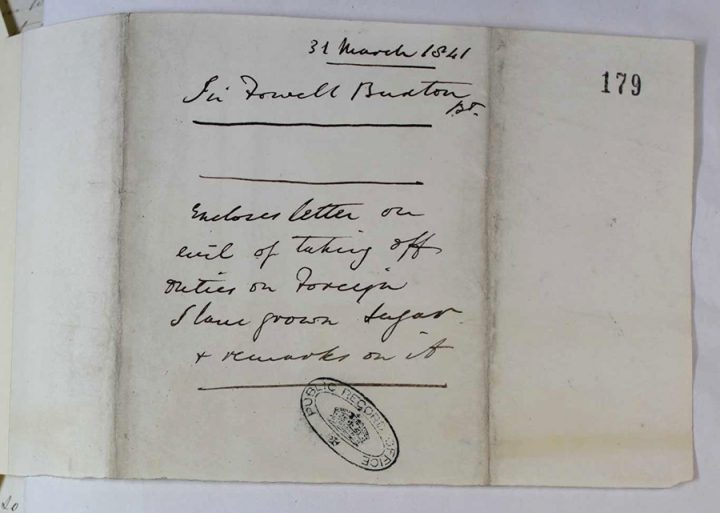
Abolitionist Thomas Buxton’s letter appealing against the introduction of cheap ‘slave’ grown sugar into the domestic market. Catalogue ref: PRO 30/22/4A
‘The Great Experiment’: Explaining the advent of indenture to the West Indies
Between the abolition of slavery in 1834 and the First World War, more than 500,000 labourers were introduced to the British West Indies under terms of indenture. There has been much debate among historians about how and why indenture occurred. This blog will explore the impact of free trade and tariff reform on the emergence of regular indentured emigration to the West Indies by the 1850s.
In October 1842, Lord Elgin, Governor of Jamaica, addressed the Jamaica legislature remarking that the West Indian colonies were ‘the theatre of a great experiment, the issue of which may affect the doom of thousands now in bondage, and of millions yet unborn’. For many of Elgin’s generation, including men like Lord John Russell, Lord Stanley and 3rd Earl Grey, concurrent Colonial Secretaries of Britain in this period, abolition of slavery in the sugar colonies was a test of monumental significance. Could free labour produce sugar more cheaply than that produced by slave producing colonies?
